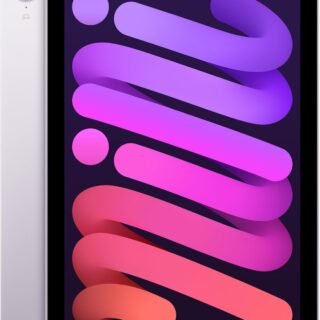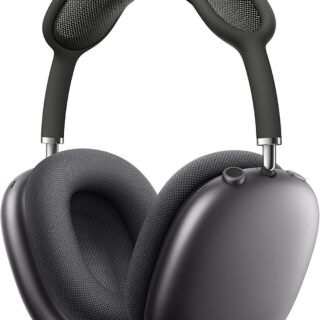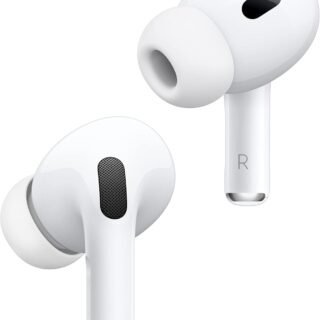Category
Popular Articles
- AI (11)
- Android (35)
- App Suggest (4)
- Apple (6)
- Apple TV (2)
- Bluetooth (2)
- Cars (2)
- ChatGpt (1)
- Did you know? (1)
- E-Commerce News (1)
- Ecommerce Websites business (7)
- Electronics Shopping (5)
- Fashion Tips (3)
- Gaming (3)
- Google Gemini (3)
- Hair Care Tips (2)
- How to (13)
- iCloud (1)
- Infotainment System (1)
- Iphone (96)
- Job Posting (1)
- Lifestyle (3)
- Mac (19)
- Mobile Games (1)
- Netflix (1)
- Online Shopping Websites (2)
- Personal Finance Management (3)
- Product Reviews (3)
- Roku TV (4)
- Samsung (7)
- Shopping Tips (10)
- Tech (69)
- Windows 11 (4)
- Zero Waste (3)
Discounted Products
-
 Leo Creation 144 TC Cotton Double Jaipuri Prints Flat Bedsheet(Pack of 1, Blue, Gree, Red, Grey, Light Grey)
Leo Creation 144 TC Cotton Double Jaipuri Prints Flat Bedsheet(Pack of 1, Blue, Gree, Red, Grey, Light Grey)
₹2,999.00Original price was: ₹2,999.00.₹329.00Current price is: ₹329.00. -
 Home Garage 210 TC Cotton King Floral Fitted (Elastic) Bedsheet(Pack of 1, Grey)
Home Garage 210 TC Cotton King Floral Fitted (Elastic) Bedsheet(Pack of 1, Grey)
₹999.00Original price was: ₹999.00.₹299.00Current price is: ₹299.00. -
 Goodrik 140 TC Cotton Double 3D Printed Flat Bedsheet(Pack of 1, Brown)
Goodrik 140 TC Cotton Double 3D Printed Flat Bedsheet(Pack of 1, Brown)
₹499.00Original price was: ₹499.00.₹229.00Current price is: ₹229.00. -
 GLOBALSHOP 350 TC Microfiber Double Floral Flat Bedsheet(Pack of 1, Multicolor)
GLOBALSHOP 350 TC Microfiber Double Floral Flat Bedsheet(Pack of 1, Multicolor)
₹1,250.00Original price was: ₹1,250.00.₹263.00Current price is: ₹263.00. -
 RisingStar 250 TC Microfiber King Printed Fitted (Elastic) Bedsheet(Pack of 1, FITTED-ROUND-CIRCLES-PREMIUM)
RisingStar 250 TC Microfiber King Printed Fitted (Elastic) Bedsheet(Pack of 1, FITTED-ROUND-CIRCLES-PREMIUM)
₹2,299.00Original price was: ₹2,299.00.₹299.00Current price is: ₹299.00. -
 Home Garage 210 TC Cotton King Floral Fitted (Elastic) Bedsheet(Pack of 1, Fitted Black Green)
Home Garage 210 TC Cotton King Floral Fitted (Elastic) Bedsheet(Pack of 1, Fitted Black Green)
₹1,299.00Original price was: ₹1,299.00.₹299.00Current price is: ₹299.00. -
 Home Garage 180 TC Cotton King 3D Printed Flat Bedsheet(Pack of 1, White)
Home Garage 180 TC Cotton King 3D Printed Flat Bedsheet(Pack of 1, White)
₹999.00Original price was: ₹999.00.₹229.00Current price is: ₹229.00. -
 Home Sizzler 153 cm (5 ft) Polyester Room Darkening Window Curtain (Pack Of 2)(Floral, Maroon)
Home Sizzler 153 cm (5 ft) Polyester Room Darkening Window Curtain (Pack Of 2)(Floral, Maroon)
₹799.00Original price was: ₹799.00.₹299.00Current price is: ₹299.00. -
 Panipat Textile Hub 152.4 cm (5 ft) Polyester Window Curtain (Pack Of 2)(Solid, Aqua)
Panipat Textile Hub 152.4 cm (5 ft) Polyester Window Curtain (Pack Of 2)(Solid, Aqua)
₹1,899.00Original price was: ₹1,899.00.₹299.00Current price is: ₹299.00. -
 Home Sizzler 214 cm (7 ft) Polyester Semi Transparent Door Curtain (Pack Of 2)(Floral, Maroon)
Home Sizzler 214 cm (7 ft) Polyester Semi Transparent Door Curtain (Pack Of 2)(Floral, Maroon)
₹1,199.00Original price was: ₹1,199.00.₹399.00Current price is: ₹399.00. -
 Home Sizzler 153 cm (5 ft) Polyester Room Darkening Window Curtain (Pack Of 2)(Floral, Brown)
Home Sizzler 153 cm (5 ft) Polyester Room Darkening Window Curtain (Pack Of 2)(Floral, Brown)
₹799.00Original price was: ₹799.00.₹299.00Current price is: ₹299.00. -
 Stella Creations 214 cm (7 ft) Polyester Room Darkening Door Curtain (Pack Of 2)(Abstract, Brown)
Stella Creations 214 cm (7 ft) Polyester Room Darkening Door Curtain (Pack Of 2)(Abstract, Brown)
₹1,299.00Original price was: ₹1,299.00.₹449.00Current price is: ₹449.00. -
 Homefab India 152.5 cm (5 ft) Polyester Room Darkening Window Curtain (Pack Of 2)(Floral, Light Blue)
Homefab India 152.5 cm (5 ft) Polyester Room Darkening Window Curtain (Pack Of 2)(Floral, Light Blue)
₹1,199.00Original price was: ₹1,199.00.₹319.00Current price is: ₹319.00. -
 Urban Home 214 cm (7 ft) PVC Transparent Door Curtain Single Curtain(Solid, Off White)
Urban Home 214 cm (7 ft) PVC Transparent Door Curtain Single Curtain(Solid, Off White)
₹699.00Original price was: ₹699.00.₹203.00Current price is: ₹203.00. -
 Panipat Textile Hub 213 cm (7 ft) Polyester Door Curtain (Pack Of 2)(Solid, Brown)
Panipat Textile Hub 213 cm (7 ft) Polyester Door Curtain (Pack Of 2)(Solid, Brown)
₹1,199.00Original price was: ₹1,199.00.₹349.00Current price is: ₹349.00.
Affiliate Links
Promotion

If you’re like me, you probably rely on your iPhone for almost everything—texting, work emails, photos of the kids, or even late-night scrolling on the couch. And because we carry our phones everywhere, accidents happen. A splash from the sink, a tumble into the pool, or even being caught in the rain can instantly make you panic. That’s when the big question comes up: Are iPhones waterproof?
The short answer is: iPhones are water-resistant, not completely waterproof. And that distinction is super important to understand if you don’t want to end up with a pricey repair bill. In this guide, I’ll explain what “water-resistant” actually means, which iPhones have this feature, how it’s measured, and what precautions you should take.
Waterproof vs. Water-Resistant
First, let’s clear up a common misconception. A device that is waterproof can survive in water indefinitely without damage. But Apple doesn’t market iPhones as waterproof. Instead, they are water-resistant, meaning they can handle water exposure for a certain depth and time limit under controlled lab conditions.
Apple achieves this water resistance through seals, adhesives, and nano-coating technology, but there’s no guarantee your iPhone will survive every encounter with water—especially as the device ages.
Understanding IP Ratings
Apple uses the Ingress Protection (IP) rating system to describe water and dust resistance.
- IP67: Protected against dust and can survive in up to 1 meter (about 3.3 feet) of water for 30 minutes.
- IP68: Better protection—tested at greater depths (up to 2–6 meters depending on the iPhone model) for 30 minutes.
But here’s the catch: these tests are done in freshwater under controlled conditions. Real-life scenarios like salty ocean water, chlorinated pools, or soapy bathwater can damage your phone more quickly.
Which iPhones Are Water-Resistant?
Here’s a breakdown of water resistance across iPhone generations:
IP67 Rated iPhones (1 meter for up to 30 minutes)
- iPhone 7 and 7 Plus (first water-resistant models)
- iPhone 8 and 8 Plus
- iPhone X
- iPhone SE (2nd generation, 2020)
- iPhone SE (3rd generation, 2022)
IP68 Rated iPhones
- iPhone XS and XS Max: Up to 2 meters for 30 minutes
- iPhone 11: Up to 2 meters for 30 minutes
- iPhone 11 Pro and Pro Max: Up to 4 meters for 30 minutes
- iPhone 12, 12 mini, 12 Pro, and 12 Pro Max: Up to 6 meters for 30 minutes
- iPhone 13 series: Up to 6 meters for 30 minutes
- iPhone 14 series: Up to 6 meters for 30 minutes
- iPhone 15 series: Up to 6 meters for 30 minutes
- iPhone 16 series: Up to 6 meters for 30 minutes (Apple’s newest release continues the same rating)
iPhones Without Water Resistance
- iPhone 6s, 6s Plus, and older models
- iPhone SE (1st generation, 2016)
If you’re still using one of these, extra caution is needed, as even a small splash can cause serious damage.
What About iPhone 17 Rumors?
Early leaks suggest the upcoming iPhone 17 lineup will keep IP68 protection with possible improvements, but as of now, the official specs aren’t confirmed. If you’re planning an upgrade, expect at least the same durability as the iPhone 15 and 16 models.
What Isn’t Covered by Apple Warranty
Here’s the part that surprises many iPhone owners: Apple’s warranty does not cover water damage, even on water-resistant models.
That’s because daily use causes wear and tear—like tiny cracks in the seals or exposure to heat—that may reduce your phone’s resistance over time. So, if your iPhone stops working after a pool accident, Apple can charge you for a repair or replacement.
Common Real-Life Questions
1. Can I take my iPhone swimming?
Technically, some models can handle being underwater for a short time, but Apple advises against it. Saltwater, chlorine, and even bubbles in hot tubs can corrode internal parts.
2. What if my iPhone falls in the toilet or sink?
If it’s an IP67 or IP68 model, it might survive—but immediately dry it off and avoid charging until you’re sure it’s completely dry.
3. Can I shower with my iPhone?
Not a good idea. Soaps, shampoos, and steam are harsh on seals and can break down resistance faster.
What To Do If Your iPhone Gets Wet
If you accidentally drop your iPhone in water:
- Turn it off immediately.
- Remove any case and gently dry the outside with a soft cloth.
- Don’t shake it or use a hair dryer—that can push water deeper.
- Leave it in a dry, airy place for at least 24 hours. Apple recommends against using rice (contrary to internet myths) because dust can get inside.
- Wait until you’re sure it’s dry before charging.
If it still doesn’t work, visit an Apple Store or authorized service provider.
Accessories for Extra Protection
If you’re often around water, it’s smart to use extra protection:
- Waterproof cases (brands like LifeProof and Catalyst)
- Floating phone pouches for boating or the beach
- AppleCare+ with Theft and Loss (doesn’t cover water damage directly, but lowers replacement costs if your phone gets ruined)
Tips to Preserve Water Resistance
Even though your iPhone might be water-resistant now, that doesn’t mean it will always stay that way. Here’s how to protect it:
- Avoid dropping your phone—impacts can break seals.
- Keep your iPhone out of hot environments (like saunas or car dashboards).
- Don’t try to open your phone for DIY repairs; it can compromise the resistance.
- Replace worn-out gaskets or seals during official repairs.
So, are iPhones waterproof? No. But many are impressively water-resistant, offering peace of mind for those everyday accidents.
- Not water-resistant: iPhone 6s and earlier, plus iPhone SE (1st gen).
- Water-resistant (IP67): iPhone 7 through iPhone X, plus SE (2nd and 3rd gen).
- Highly water-resistant (IP68): iPhone XS to iPhone 16, with up to 6 meters for 30 minutes in the latest models.
Still, water and electronics never mix well. Treat water resistance as a helpful safety net, not a free pass to take your iPhone swimming.
For me, just knowing that my phone can survive an accidental splash when I’m rushing around with the kids makes life a little less stressful. But I still wouldn’t risk dunking it in a pool for the sake of testing. Better safe than sorry when it comes to a device this valuable!
Written by Bazaronweb
Latest Tech Articles
- How to see sofas, tables, and lamps in your actual living room before you click “buy”

- M5 Chip Unleashed: How Apple’s New Silicon is Revolutionizing On-Device AI

- iPhone 17 vs. iPhone Air: The Ultimate Specs Showdown (And Why I’m Already Eyeing the Trade-In Button)

- 5 Powerful Cybersecurity Apps Every Computer User Needs in 2026

- The 6 Most Reliable Laptop Brands in 2026: A Data-Backed Breakdown

Products
-
![Apple Watch Ultra 3 [GPS + Cellular 49mm] Running & Multisport Smartwatch w/Rugged Titanium Case w/Black Titanium Milanese Loop - M. Satellite Communications, Advanced Health & Fitness Tracking](https://bazaronweb.com/retailstores/wp-content/uploads/2025/09/apple-watch-320x320.jpg) Apple Watch Ultra 3 [GPS + Cellular 49mm] Running & Multisport Smartwatch w/Rugged Titanium Case w/Black Titanium Milanese Loop - M. Satellite Communications, Advanced Health & Fitness Tracking
Apple Watch Ultra 3 [GPS + Cellular 49mm] Running & Multisport Smartwatch w/Rugged Titanium Case w/Black Titanium Milanese Loop - M. Satellite Communications, Advanced Health & Fitness Tracking
-
 Apple iPad mini (A17 Pro): Apple Intelligence, 8.3-inch Liquid Retina Display, 256GB, Wi-Fi 6E, 12MP Front/12MP Back Camera, Touch ID, All-Day Battery Life — Purple
Apple iPad mini (A17 Pro): Apple Intelligence, 8.3-inch Liquid Retina Display, 256GB, Wi-Fi 6E, 12MP Front/12MP Back Camera, Touch ID, All-Day Battery Life — Purple
-
 Apple AirPods Max Wireless Over-Ear Headphones, Active Noise Cancelling, Transparency Mode, Personalized Spatial Audio, Dolby Atmos, Bluetooth Headphones for iPhone – Space Gray
Apple AirPods Max Wireless Over-Ear Headphones, Active Noise Cancelling, Transparency Mode, Personalized Spatial Audio, Dolby Atmos, Bluetooth Headphones for iPhone – Space Gray
-
 Apple AirPods Pro 2 Wireless Earbuds, Active Noise Cancellation, Hearing Aid Feature, Bluetooth Headphones, Transparency, Personalized Spatial Audio, High-Fidelity Sound, H2 Chip, USB-C Charging
Apple AirPods Pro 2 Wireless Earbuds, Active Noise Cancellation, Hearing Aid Feature, Bluetooth Headphones, Transparency, Personalized Spatial Audio, High-Fidelity Sound, H2 Chip, USB-C Charging
-
 Leo Creation 144 TC Cotton Double Jaipuri Prints Flat Bedsheet(Pack of 1, Blue, Gree, Red, Grey, Light Grey)
Leo Creation 144 TC Cotton Double Jaipuri Prints Flat Bedsheet(Pack of 1, Blue, Gree, Red, Grey, Light Grey)
₹2,999.00Original price was: ₹2,999.00.₹329.00Current price is: ₹329.00.
Leave a Reply